
India City Guides
India: An Introduction
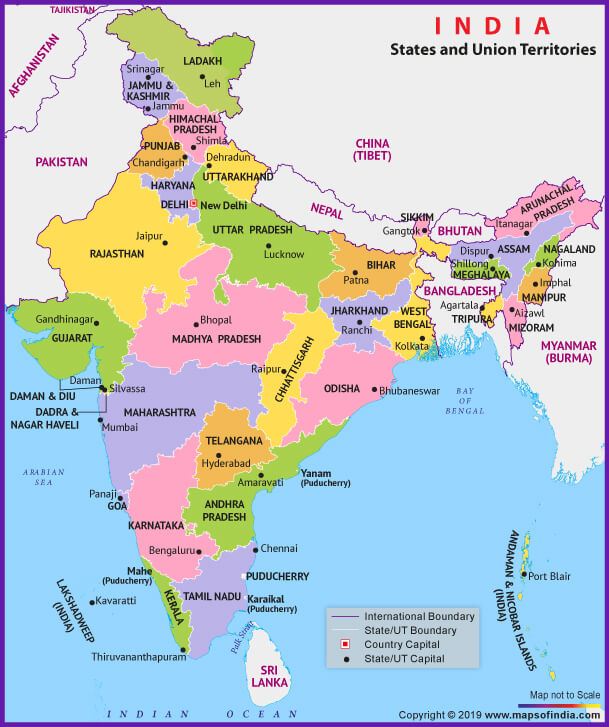
India is home to one of the world's most ancient civilizations, rich in physical beauty and immersed in cultural intricacies.It is the seventh largest country in the world, and offers the discerning visitors a lively, colourful kaleidoscope of experiences.The world's highest mountain chains...the ancient, bustling cities of the north...the incomparable Taj Mahal, the peaceful golden beaches of Goa and Kerala, the temples and monuments of the south. India's tourist attractions would fill several volumes. As would the vast and largely untapped potential of its 915 million strong market.
India is one of the largest democracies, with huge middle class population having sufficient disposable income. This presents tremendous opportunities to multinationals to expand their customer base. Indians can work hard and are an intelligent race, making them mostly sought after in many professional services.
National Identity Elements
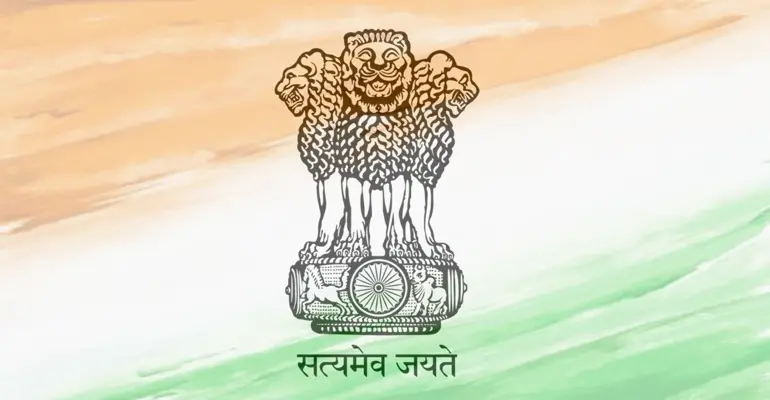
National Emblem
The National emblem of India is a replica of the Lion of Sarnath, near Varanasi in Uttar Pradesh. The Lion Capital was erected in the third century BC by Emperor Ashoka to mark the spot where Buddha first proclaimed his gospel of peace and emanicipation to the four quarters of the universe. The national emblem is thus symbolic of contemporary India's reaffirmation of it's ancient commitment to world peace and goodwill.
The four lions(one hidden from view ) symbolising power, courage and confidence- rest on a circular abacus. The abacus is girded by four smaller animals- guardians of the four directions: the lion of the north, the elephant of the east, the horse of the south and the bull of the west . The abacus rests on alotus in full bloom, exemplifying the fountainhead of life and creative inspiration.
The motto 'Satyameva Jayate' inscribed below the emblem in Devanagari script means 'truth alone triumphs'.
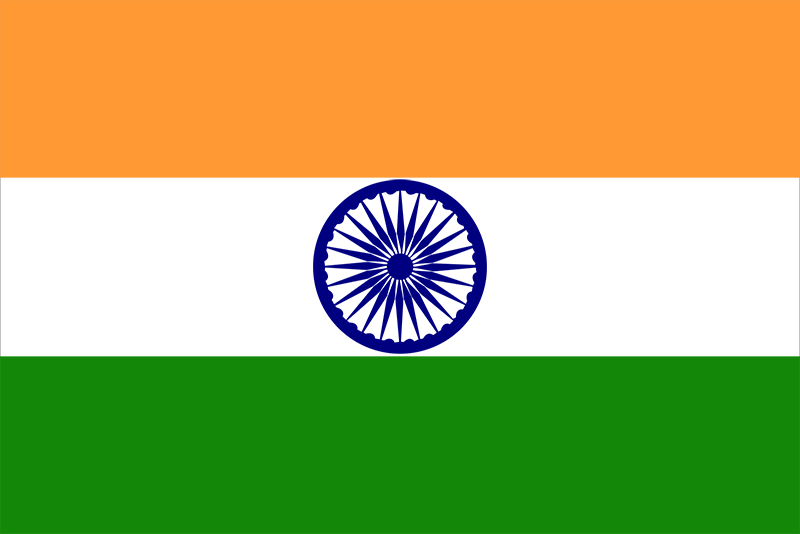
National Flag
The Indian flag was designed as a symbol of freedom. The late Prime Minister Nehru called it a flag not only of freedom for ourselves, but a symbol of freedom to all people.
The flag is a horizontal tricolour in equal proportion of deep saffron on the top, white in the middle and dark green at the bottom. The ratio of the width to the length of the flag is two is to three. In the centre of the white band, there is a wheel in navy blue to indicate the Dharma Chakra, the wheel of law in the Sarnath Lion Capital. It's diameter approximates the width of the white band and it has 24 spokes. The saffron stands for courage, sacrifice and the spirit of renunciation; the white, for purity and truth; the green for faith and fertility.
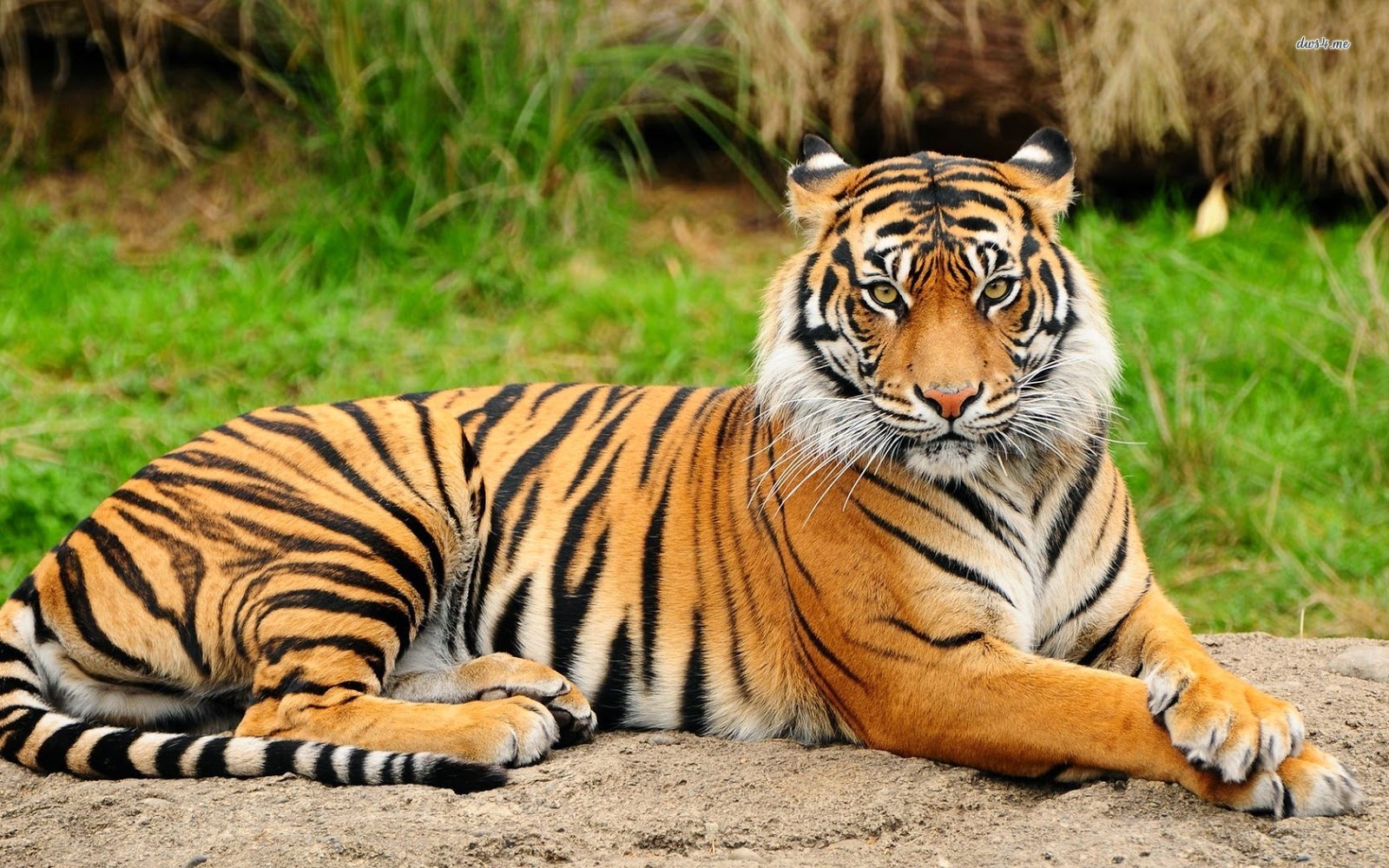
National Animal - Tiger
Large Asiatic carnivorous feline quadruped Panthera Tigris, maneless, of tawny yellow colour with blackish transverse stripes and white belly, proverbial for its power and its magnificence.
There are very few tigers left in the world today. A decade ago the tiger population in India had dwindled to a few hundreds. The Government of India, under its Project Tiger programme, started a massive effort to preserve the tiger population . Today, thanks to Project Tiger, India's population of tigers is in a comfortable position.
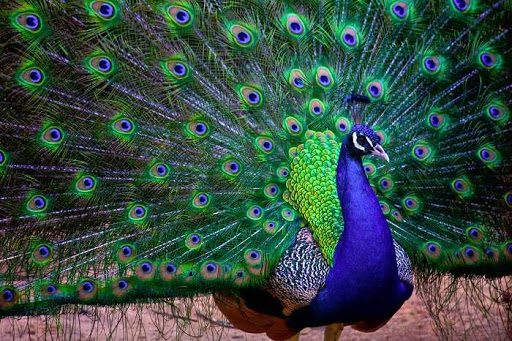
National Bird - Peacock
Male bird of species P.cristatus, is a native of India, with striking plumage and upper tail converts marked with iridescent ocelli, able to expand its tail erect like fan as ostentatious display. Peacocks are related to pheasants.
Found wild in India (and also domesticated in villages) they live in jungle lands near water. They were once bred for food but now hunting of peacocks is banned in India. The peahen has no plumage. These birds do not sound as beautiful as they look they have a harsh call.
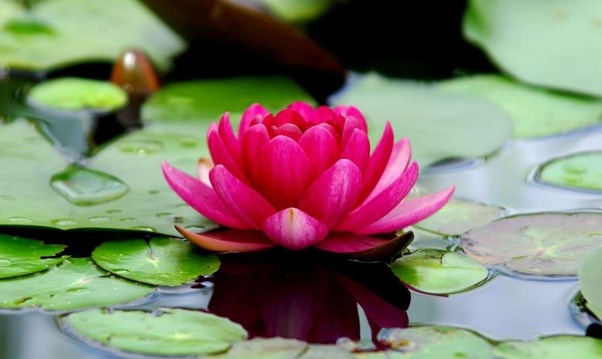
National Flower - Lotus
The Lotus or waterlily is an aquatic plant of Nymphaea with broad floating leaves and bright fragrant flowers that grow only in shallow waters. The leaves and flowers float and have long stems that contain air spaces. The big attractive flowers have many petals overlapping in a symmetrical pattern. The root functions are carried out by rhizomes that fan out horizontally through the mud below the water. Lotuses, prized for their serene beauty, are delightful to behold as their blossoms open on the surface of a pond. In India the sacred lotus is legendary and much folklore and religious mythology is woven around it.
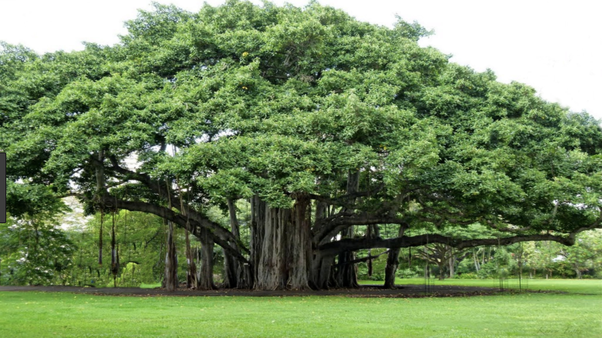
National Tree - Banyan
Indian fig tree, Ficus bengalensis, whose branches root themselves like new trees over a large area. The roots then give rise to more trunks and branches. Because of this characteristic and its longevity, this tree is considered immortal and is an integral part of the myths and legends of India. Even today, the banyan tree is the focal point of village life and the village council meets under the shade of this tree.
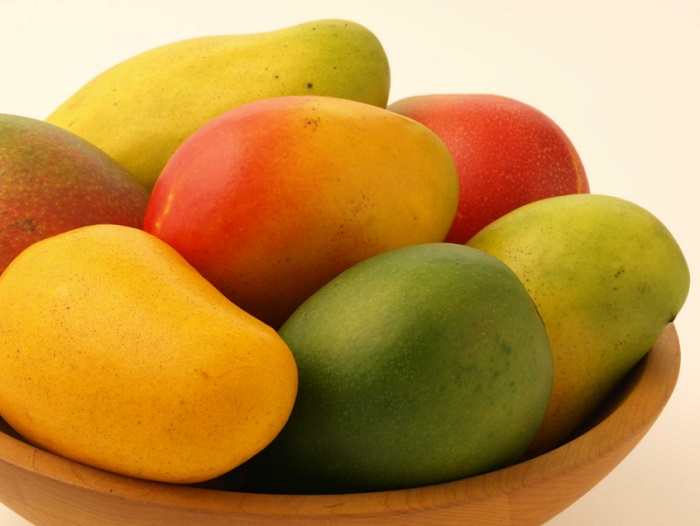
National Fruit - Mango
A fleshy fruit, eaten ripe or used green for pickles etc., of the tree Mangifera indica, the mango is one of the most important and widely cultivated fruits of the tropical world. Its juicy fruit is a rich source of Vitamins A, C and D. In India there are over 100 varieties of mangoes, in different sizes, shapes and colours. Mangoes, have been cultivated in India from time immemorial. The poet Kalidasa sang its praises. Alexander the great savoured its taste, as did the Chinese pilgrim Hieun Tsang. Akbar planted 100,000 mango trees in Darbhanga, known as Lakhibagh.

People
India is probably the country with the largest and most diverse mixture of races. All the five major racial types - Australoid, Mongoloid, Europoid, Caucasian and Negroid - find representation among the people of India, who are mainly a mixed race.
The people of India belong to diverse ethnic groups. At various periods of India's long history, successive waves of settlers and invaders including the Aryans, Parthians, Greeks and Central Asians came into the country and merged with the local population. This explains the variety of racial types, cultures and languages in India.
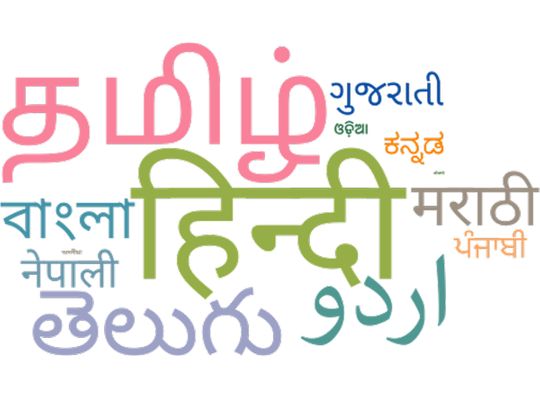
Languages
India has about 18 major languages and 844 different dialects. The Sanskirt of the Aryan settlers has merged with he earlier Dravidian vernaculars to give rise to new languages. Hindi spoken by about 45 per cent of the population is the official language. English has also been retained as a language for official communication.
Indian literature dates back several millennia to the hymns of the vedic Aryans. The oral tradition nurtured classical literature, and produced great works of philosophy and religious doctrine. It also accounted for compilations of anecdotes like the Panchatantra and the Jataka tales, as well as epics like the Ramayana and the Mahabharatha. In southern India, the creative energies of the Tamil poets found expression in he great works of Sangam literature. The epic Tirukkural by Tiruvalluvar is a masterpiece of this age. In the north, dramatists like Kalidasa and Bhasa produced great dramas in Sanskrit.
India Religions
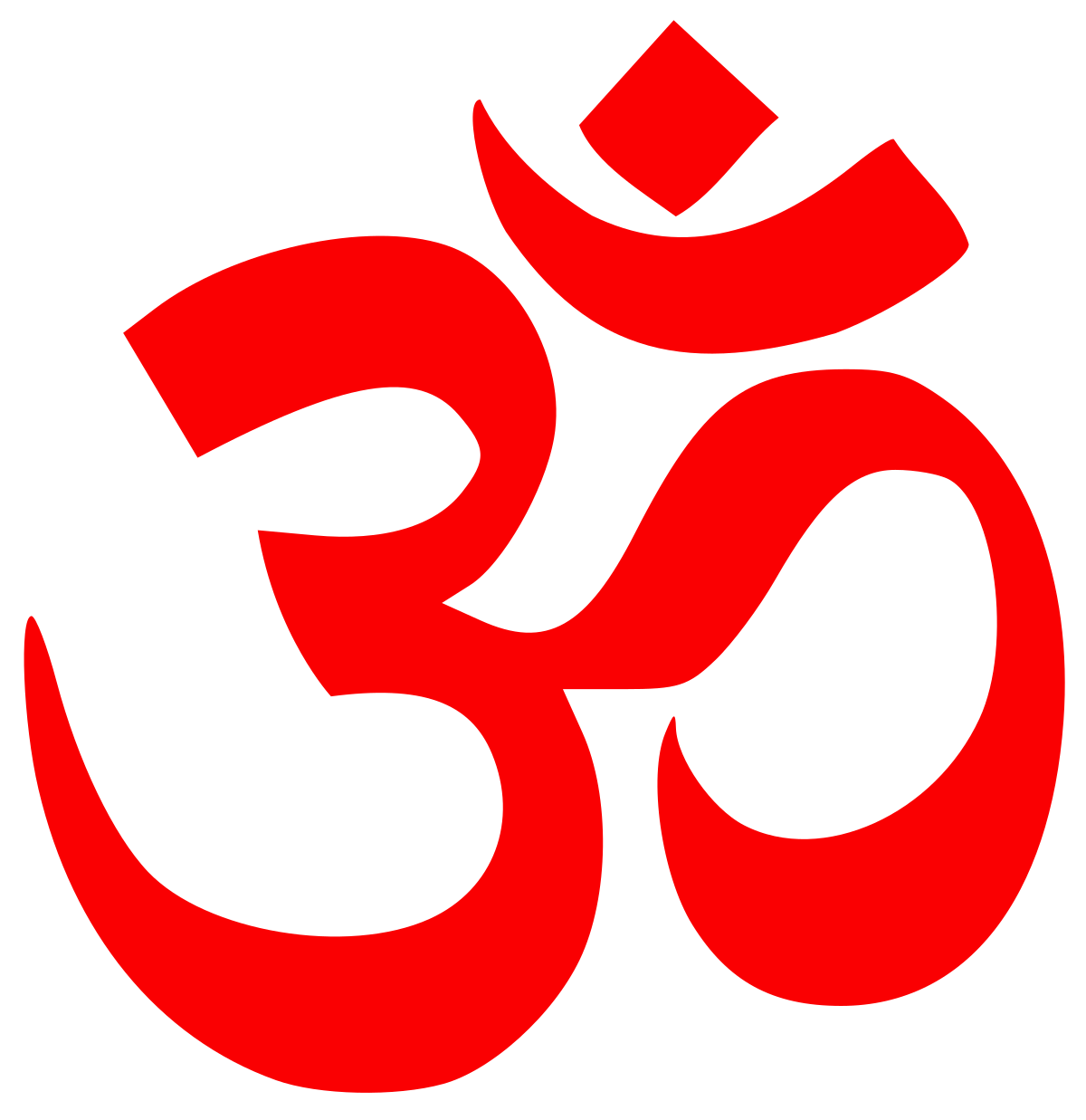
Hinduism
The Hindu religion had its origin in the concepts of the early Aryans who came to India more than 4000 years ago. It is not merely a religion but also a philosophy and a way of life. It does not originate in the teachings of any one prophet or holy book. It respects other religions and does not attempt to seek converts. It teaches the immortality of the human soul and three principal paths to ultimate union of the individual soul with the all pervasive spirit.
The essence of Hindu faith is embodied in the Lord's Song, the Bhagavad Gita: "He who considers this (self) as a slayer or he who thinks that this (self) is slain, neither knows the Truth. For it does not slay, nor is it slain. This (self) is unborn, eternal, changeless, ancient, it is never destroyed even when the body is destroyed.
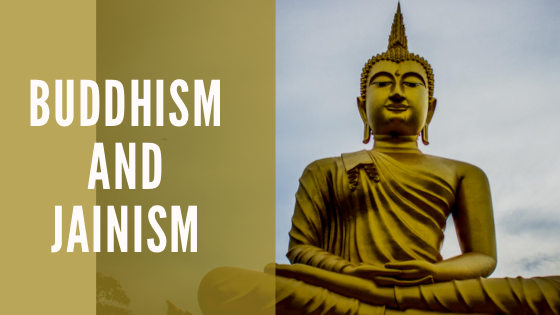
Jainism and Buddhism
In the sixth century before Christ, Mahavira propagated Jainism. Its message was asceticism, austerity and non violence. At about the same time, Buddhism came into being. Gautama Buddha, a prince, renounced the world and gained enlightenment. He preached that `Nirvana' was to be attained through the conquest of self. Buddha's teachings in time spread to china and some other countries of South East Asia.

Islam
Arab traders brought Islam to South India in the seventh century. After them came the Afghans and the Moghuls, among whom the most enlightened was the Emperor Akbar. Akbar almost succeeded in founding a new religion Din-e-Elahi, based on both Hinduism and Islam, but it found few adherents.Islam has flourished in India through the centuries. Muslim citizens have occupied some of the highest positions in the country since independence in 1947.
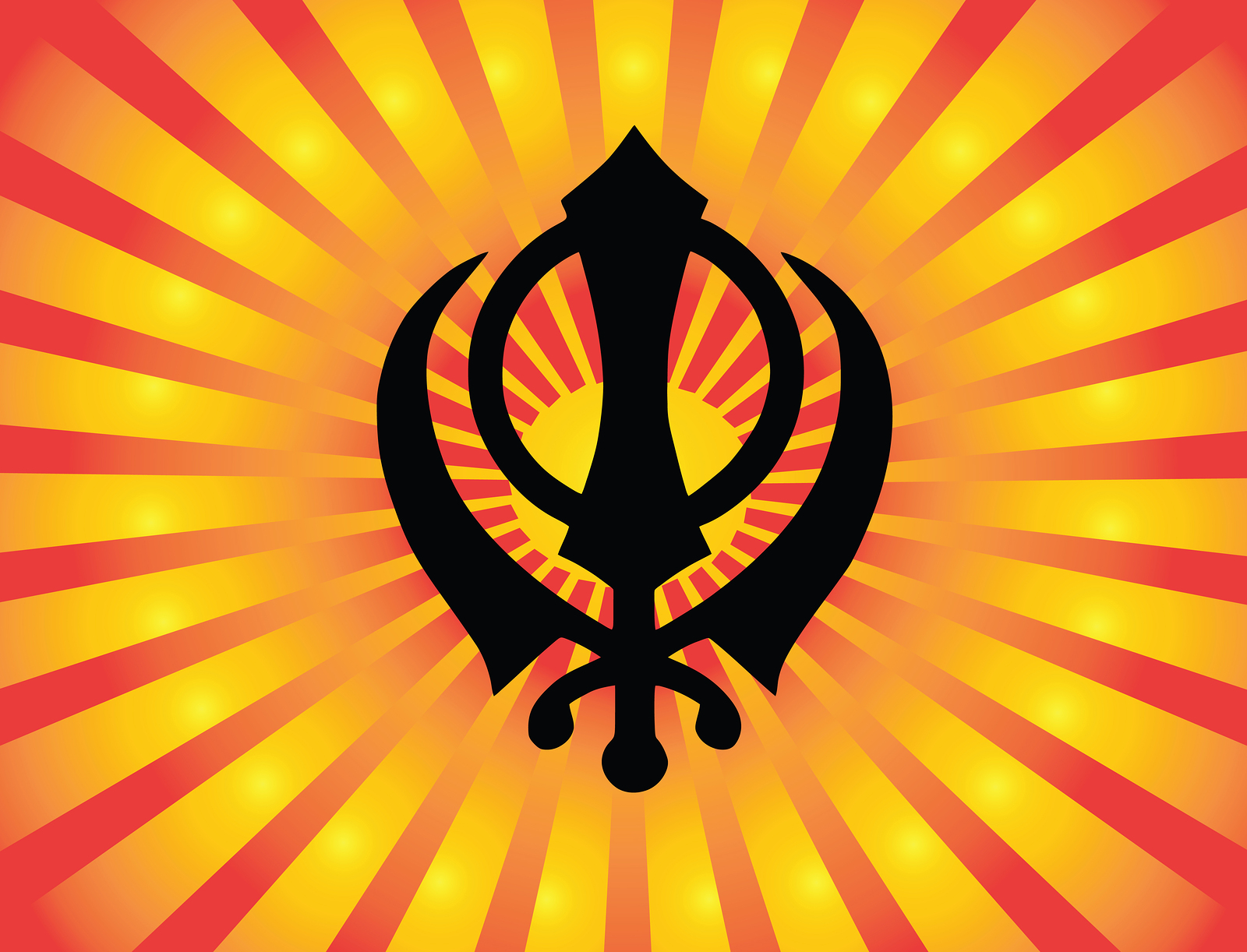
Sikhism
Guru Nanak, the founder of Sikhism in the 15th century stressed the unity of God and the brotherhood of man. Sikhism, with its affirmation of God as the one supreme truth and its ideals of discipline and spiritual striving, soon won many followers. It was perhaps possible only in this hospitable land that two religions as diverse as Hinduism and Islam could come together in a third, namely Sikhism.

Christianity
Christianity reached India not long after Christ's own lifetime, with the arrival of St. Thomas, the Apostle. The Syrian Christian Church in the south traces its roots to the visit of St. Thomas. With the arrival of St. Francis Xavier in 1542 the Roman Catholic faith was established in India. Today Christians of several denominations practice their faith freely.

Zoroastrianism
In the days of the old Persian empire, Zoroastrianism was the dominant religion in West Asia, and in the form of Mithraism, it spread over vast areas of the Roman empire, as far as Britain. After the Islamic conquest of Iran, a few intrepid Zoroastrians left their homeland and sought refuge in India. The first group is said to have reached Diu in about 766 AD. Their total world population probably does not exceed 130,000. With the exception of some 10,000 in Iran, almost all of them live in India, the vast majority concentrated in Bombay. The Parsees excel in industry and commerce, and contribute richly to the intellectual and artistic life of the nation.

Judaism
Jewish contact with the Malabar Coast in Kerala, dates back to 973 BC when King Solomon's merchant fleet began trading for spices and other fabled treasures. Scholars say that the Jews first settled in Cranganore, soon after the Babylonian conquest of Judea in 586 BC. The immigrants were well received and a Hindu king granted to Joseph Rabban, a Jewish leader, a tittle and a principality.
India Facts
| Location | Southern Asia, bordering the Arabian Sea and the Bay of Bengal, between Burma and Pakistan |
|---|---|
| Area | total: 3,287,590 sq km land: 2,973,190 sq km water: 314,400 sq km |
| Land Boundaries | total: 14,103 km Border countries: Bangladesh 4,053 km, Bhutan 605 km, Burma 1,463 km, China 3,380 km, Nepal 1,690 km, Pakistan 2,912 km |
| Coastline | 7,517 km |
| Climate | Varies from tropical monsoon in south to temperate in north |
| Land Population | 1,385,863,914(1.38 billion) (November 2020 est.) @ 0.99 % growth rate |
| Religions | Hindu 81.3%, Muslim 12%, Christian 2.3%, Sikh 1.9%, other groups including Buddhist, Jain, Parsi 2.5% (2011) |
| Literacy | Definition: age 15 and over can read and write total population: 74.04% male: 82.14% female: 65.46% (2011 est.) |